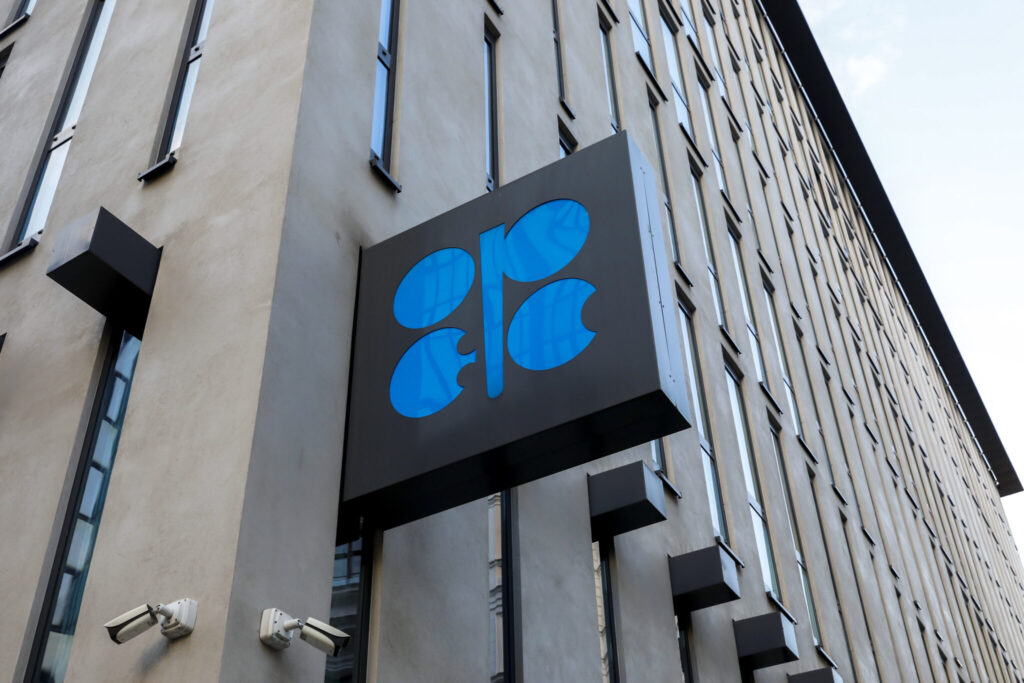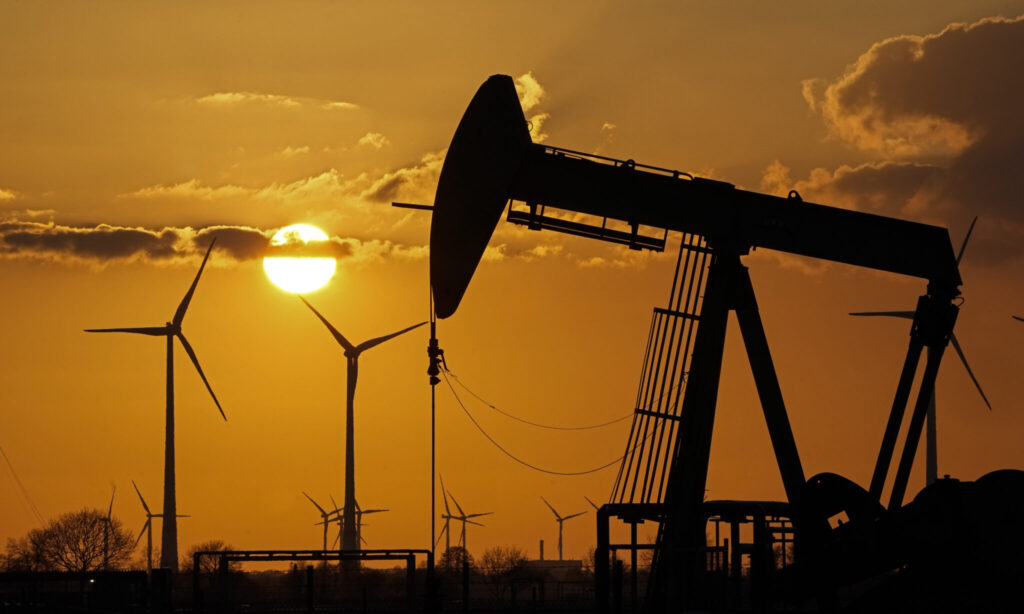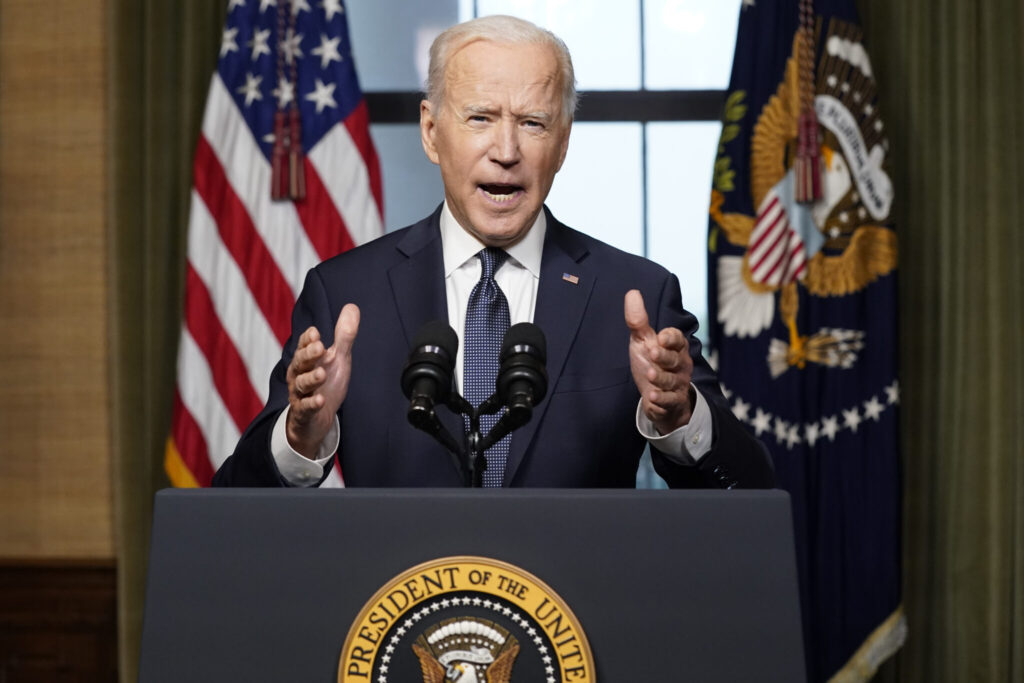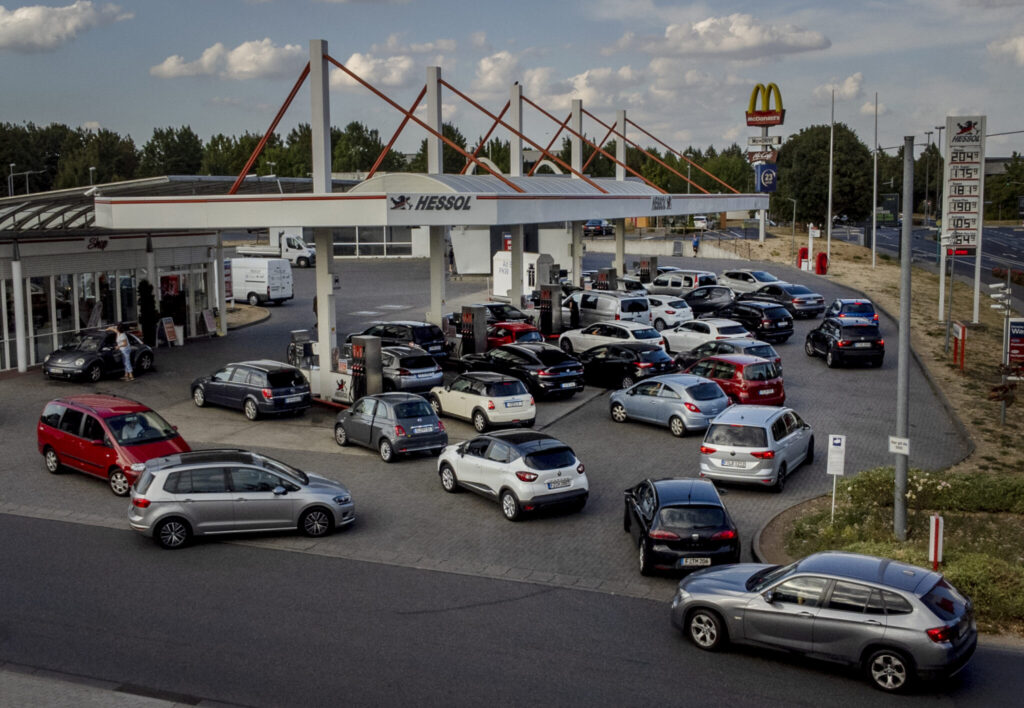Oil prices jumped about $5 per barrel as trading opened in Asia Monday morning, with Brent Futures crude prices jumping about 6.3 percent to $84.95 a barrel, its highest price in about a month. This sudden increase happened after Saudi Arabia and other major oil producers announced surprise cuts totaling up to 1.15 million barrels per day from May until the end of the year, a move that could raise prices worldwide. Higher oil prices would help fill Russian President Vladimir Putin’s coffers as his country wages war on Ukraine and force Americans and others to pay even more at the pump amid worldwide inflation. The Associated Press has the story:
Oil producers’ cuts could boost gasoline prices
Newslooks- FRANKFURT, Germany (AP)
Major oil-producing countries led by Saudi Arabia said they’re cutting supplies of crude — again. This time, the decision was a surprise and is underlining worries about where the global economy might be headed.
Russia is joining in by extending its own cuts for the rest of the year. In theory, less oil flowing to refineries should mean higher gasoline prices for drivers and could boost the inflation hitting the U.S. and Europe. And that may also help Russia weather Western sanctions over its invasion of Ukraine at the expense of the U.S.

The decision by oil producers, many of them in the OPEC oil cartel, to cut production by more than 1 million barrels a day comes after prices for international benchmark crude slumped amid a slowing global economy that needs less fuel for travel and industry.
It adds to a cut of 2 million barrels per day announced in October. Between the two cuts, that’s about 3% of the world’s oil supply.
Here are key things to know about the cutbacks:
WHY ARE OIL PRODUCERS CUTTING BACK?
Saudi Arabia, OPEC’s dominant member, said Sunday that the move is “precautionary” to avoid a deeper slide in oil prices.
Saudi Energy Minister Abdulaziz bin Salman has consistently taken a cautious approach to future demand and favored being proactive in adjusting supply ahead of a possible downturn in oil needs.

That stance seemed to be borne out as oil prices fell from highs of over $120 per barrel last summer to $73 last month. Prices jumped after Sunday’s announcement, with international benchmark Brent crude trading at about $85 on Monday, up 6%.
With fears of a U.S. recession exacerbated by bank collapses, a lack of European economic growth and China’s rebound from COVID-19 taking longer than many expected, oil producers are wary of a sudden collapse in prices like during the pandemic and the global financial crisis in 2008-2009.
Capital markets analyst Mohammed Ali Yasin said most people had been waiting for the June 4 meeting of the OPEC+ alliance of OPEC members and allied producers, most prominently Russia. The decision underlined the urgency felt by producers.

“It was a surprise to all, I think, watchers and the market followers,” he said. “The swiftness of the move, the timing of the move and the size of the move were all significant.”
The aim now is to ward off “a continous slide of the oil price” to levels below $70 per barrel, which would be “very negative” for producer economies, Yasin said.
Part of the October cut of 2 millions barrels per day was on paper only as some OPEC+ countries aren’t able to produce their share. The new cut of 1.15 million barrels per day is distributed among countries that are hitting their quotas — so it amounts to roughly the same size cut as in October.
Governments announced the decision outside the usual OPEC+ framework. The Saudis are taking the lead with 500,000 barrels per day, with the United Arab Emirates, Kuwait, Iraq, Oman, Algeria and Kazakhstan contributing smaller cuts.
WILL THE PRODUCTION CUT MAKE INFLATION WORSE?
It certainly could. Analysts say supply and demand are relatively well balanced, which means production cuts could push prices higher in coming months.
The refineries that turn crude into gasoline, diesel and jet fuel are getting ready for their summer production surge to meet the annual increase in travel demand.
In the U.S., gasoline prices are highly dependent on crude, which makes up about half of the price per gallon. Lower oil prices have meant U.S. drivers have seen the average price fall from records of over $5 per gallon in mid-2022 to $3.50 per gallon this week, according to motor club AAA.

The cuts, if fully implemented, “would further tighten an already fundamentally tight oil market,” Jorge Leon, senior vice president at Rystad Energy, said in a research note. The cut could boost oil prices by around $10 per barrel and push international Brent to around $110 per barrel by this summer.
Those higher prices could fuel global inflation in a cycle that forces central banks to keep hiking interest rates, which crimp economic growth, he said.
Given the fears about the overall economy, “the market may interpret the cuts as a vote of no confidence in the recovery of oil demand and could even carry a downside price risk — but that will only be for the very short term,” Leon said.
WHAT WILL THIS MEAN FOR RUSSIA?
Moscow says it will extend a cut of 500,000 barrels per day through the rest of the year. It needs oil revenue to support its economy and state budget hit by wide-ranging sanctions from the U.S., European Union and other allies of Ukraine.
Analysts think, however, that Russia’s cut may simply be putting the best face on reduced demand for its oil. The West shunned Russian barrels even before sanctions were imposed, with Moscow managing to reroute much of its oil to India, China and Turkey.

But the Group of Seven major democracies imposed a price cap of $60 per barrel on Russian shipments, enforced by bans on Western companies that dominate shipping or insurance. Russia is selling oil at a discount, with revenue sagging at the start of this year.
WHAT DOES THE WHITE HOUSE SAY?
White House National Security Council spokesperson Adrienne Watson, said that “we don’t think cuts are advisable at this moment given market uncertainty — and we’ve made that clear.”
She noted that ”prices have come down significantly since last year, more than $1.50 per gallon from their peak last summer” and that “we will continue to work with all producers and consumers to ensure energy markets support economic growth and lower prices for American consumers.”

The initial White House response was milder than in October, when cuts came on the eve of U.S. midterm elections where soaring gas prices were a major issue. President Joe Biden vowed at the time that there would be “consequences,” and Democratic lawmakers called for freezing cooperation with the Saudis.
Caroline Bain, chief commodities economist at Capital Economics, said the cutback shows “the group’s support for Russia and flies in the face of the Biden administration’s efforts to lower oil prices.”







